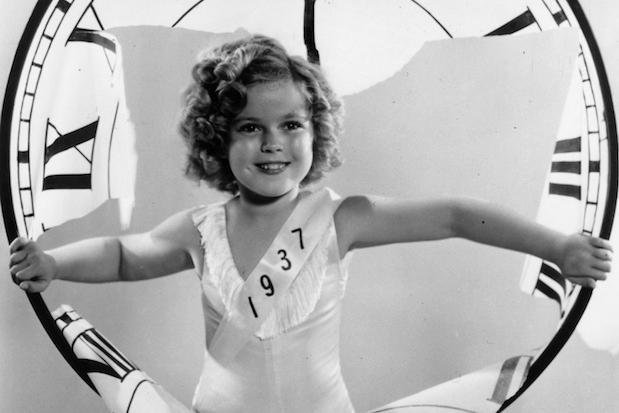Shirley Temple, who died last week at the age of 85, was the most successful child film star in history. During the second half of the 1930s, a decade in which she made 23 films and earned $3 million before puberty, she was America’s most popular film star of any kind; Clark Gable came only a distant second. What was the secret of her enormous popularity? According to Temple’s own oft-repeated explanation, ‘People in the Depression wanted something to cheer them up, and they fell in love with a dog, Rin Tin Tin, and a little girl.’ This surely has truth in it, for the precocious, confident, sparkling little actress embodied an optimism for which her country yearned. But Graham Greene, in a 1937 review of one of her most famous films, Wee Willie Winkie, offered a rather creepier interpretation. It was a review that resulted in a successful libel action by Shirley Temple’s Hollywood studio, Twentieth Century Fox, which precipitated the death of Britain’s recently launched rival to the New Yorker, the stylish and exuberant but underfunded literary magazine Night and Day.
In his review, for which the magazine was fined £3,500 and made to pay a further £1,500 in legal costs, Greene suggested that the essence of Shirley Temple’s appeal was in fact sexual. ‘Infancy with her is a disguise,’ he wrote. ‘Her appeal is more secret and more adult.’ He went on to refer to ‘her neat and well-developed rump’, to the ‘sidelong, searching coquetry of her eyes’, and ‘the way she measures a man with agile studio eyes, with dimpled depravity’.
‘Adult emotions of love and grief glissade across the mask of childhood, a childhood skin-deep,’ he continued. ‘It is clever, but it cannot last. Her admirers — middle-aged men and clergymen— respond to her dubious coquetry, to the sight of her well-shaped and desirable little body, packed with enormous vitality, only because the safety curtain of story and dialogue drops between their intelligence and their desire.’ In granting the libel damages, of which Greene had to pay £500 out of his own pocket, the court in London appeared to accept Twentieth Century Fox’s claim that he had accused it of ‘procuring’ Shirley Temple ‘for immoral purposes’. This was absurd — Greene had, of course, done no such thing — but what of his reflections on the nature of her appeal?
I have been looking at clips from Shirley Temple films on YouTube, and I have to say that she doesn’t do it for me. Maybe it’s because I’m not a clergyman or Jimmy Savile, but I cannot imagine what her sex appeal might be. She was a chubby little child with fat legs and a square body, and Greene’s idea that she resembled Marlene Dietrich when wearing trousers seems quite extraordinary. But even if she possessed some kind of sexual allure that I cannot understand, one must presume that this can only have affected a small minority of her many millions of fans, only some of whom will have been clergymen or other middle-aged men. The most obvious reason for her popularity was her almost unbearable cuteness, achieved by her sprightly singing and dancing and by her combination of precociousness and apparent innocence.
Greene, who was also a film critic for The Spectator, had at first reacted rather favourably to her in this magazine, writing in a 1936 review of her film The Littlest Rebel: ‘I had not seen Miss Temple before…as I expected, there was the usual sentimental exploitation of childhood, but I had not expected the tremendous energy which her rivals certainly lacked.’ But soon afterwards he foreshadowed his assessment of her in Night and Day by writing here in another review that ‘some of her popularity seems to rest on a coquetry quite as mature as Miss [Claudette] Colbert’s and on an oddly precocious body as voluptuous in grey flannel trousers as Miss Dietrich’s’.
In a long obituary of Shirley Temple last week, the New York Times made only passing reference to the Graham Greene drama; but it noted that Temple had started her career as a four-year-old in a series of ‘sexually suggestive’ short films called Baby Burlesks in which children played all the roles and ‘wore fancy adult costumes that ended at the waist’, beneath which were nappies secured with oversize safety pins. So maybe Greene was on to something after all.






Comments